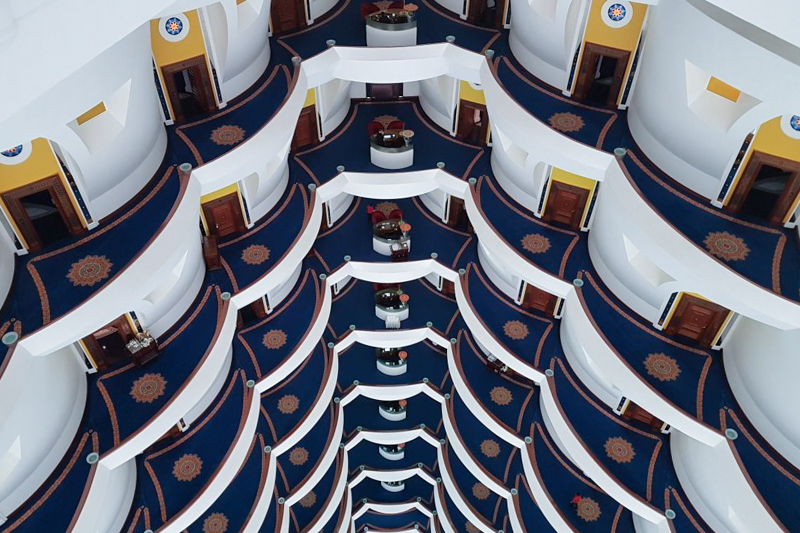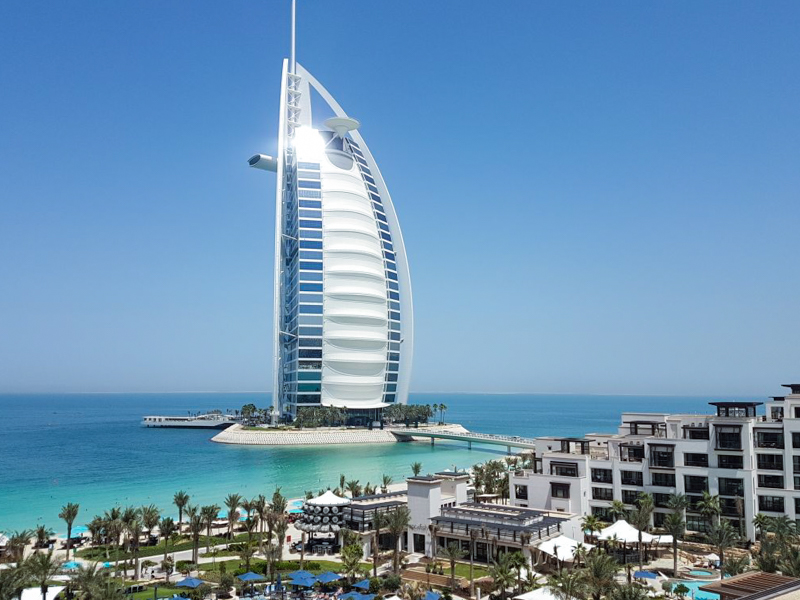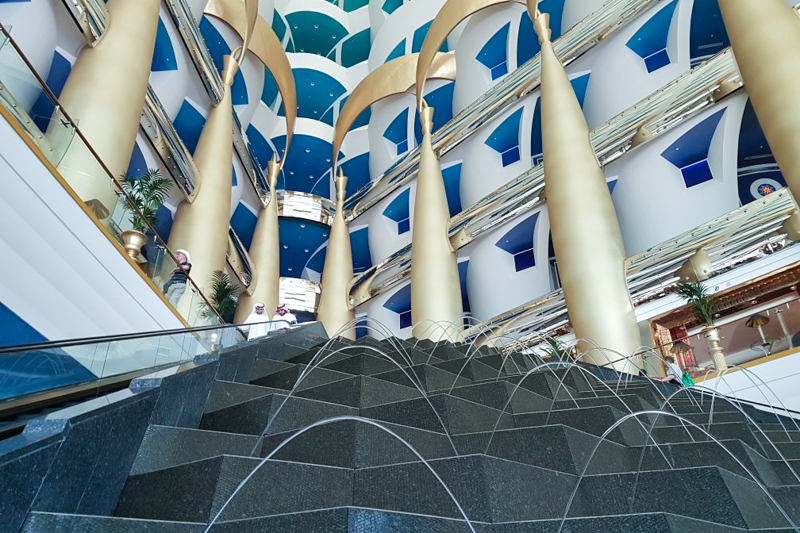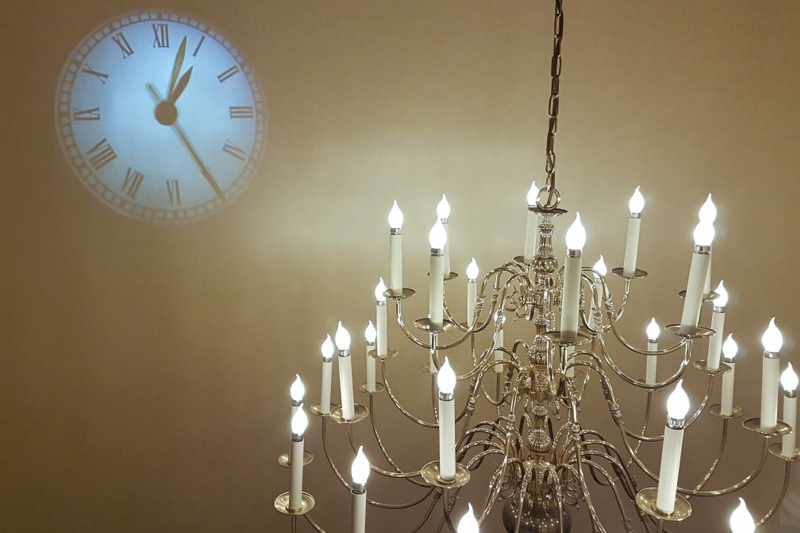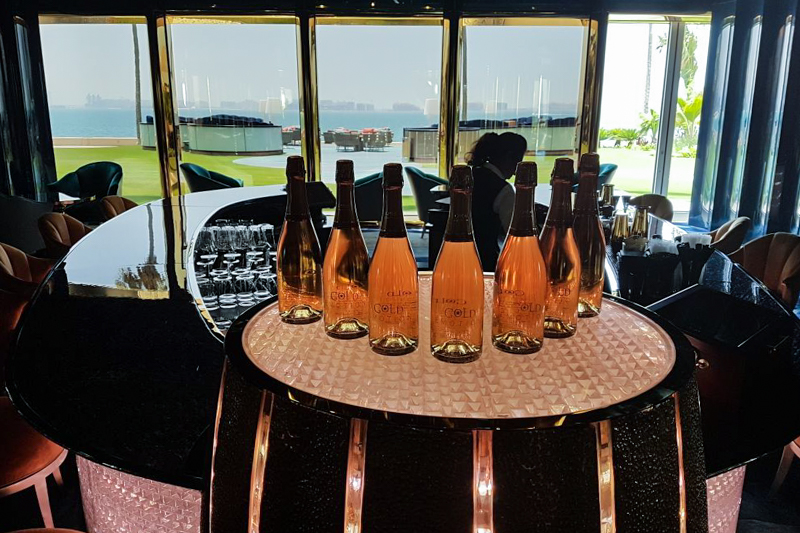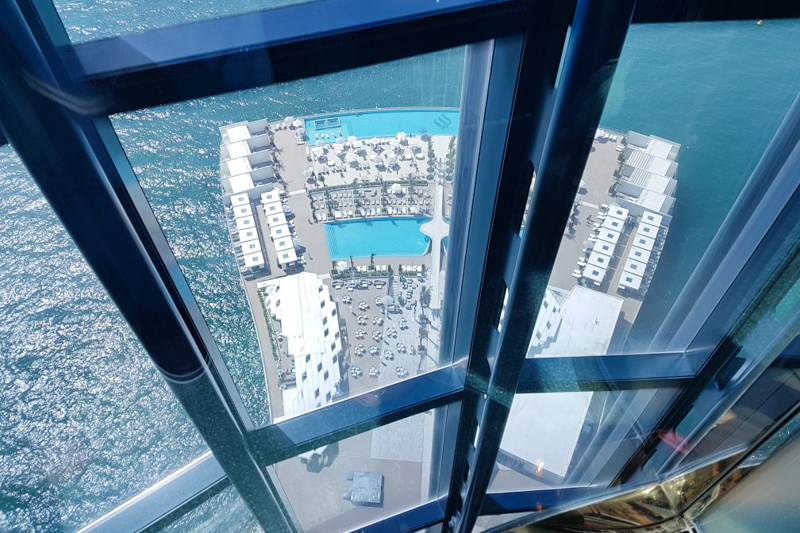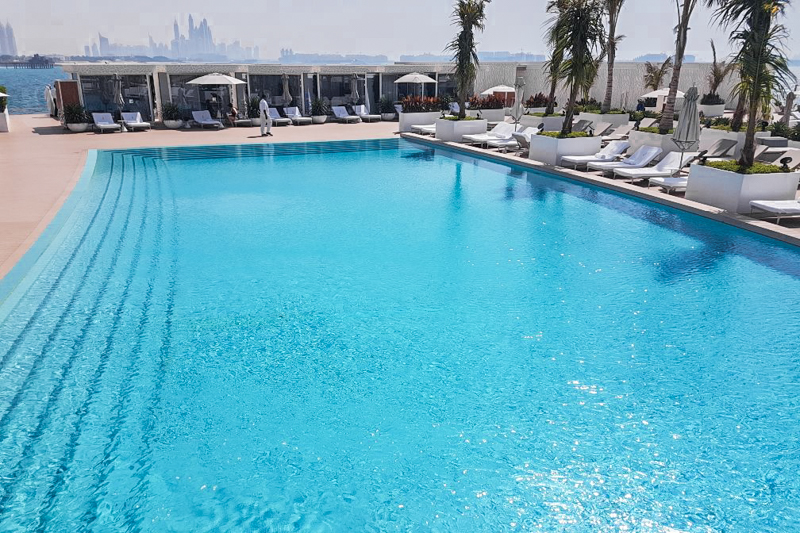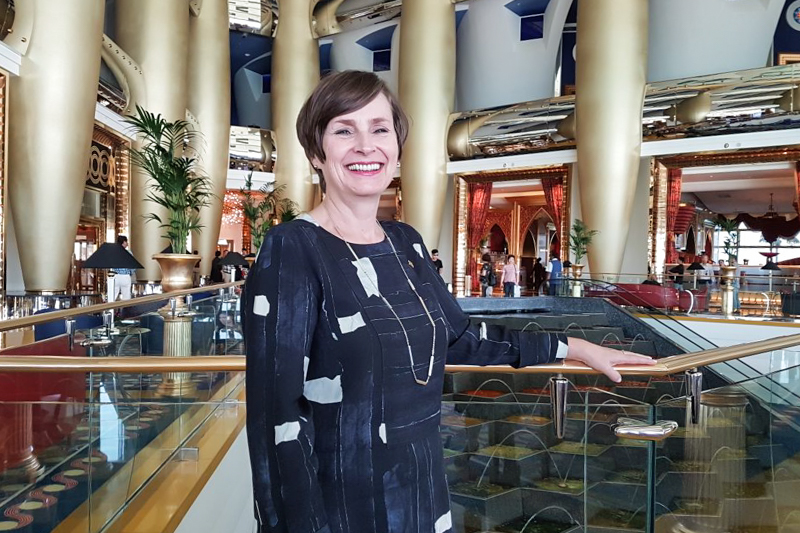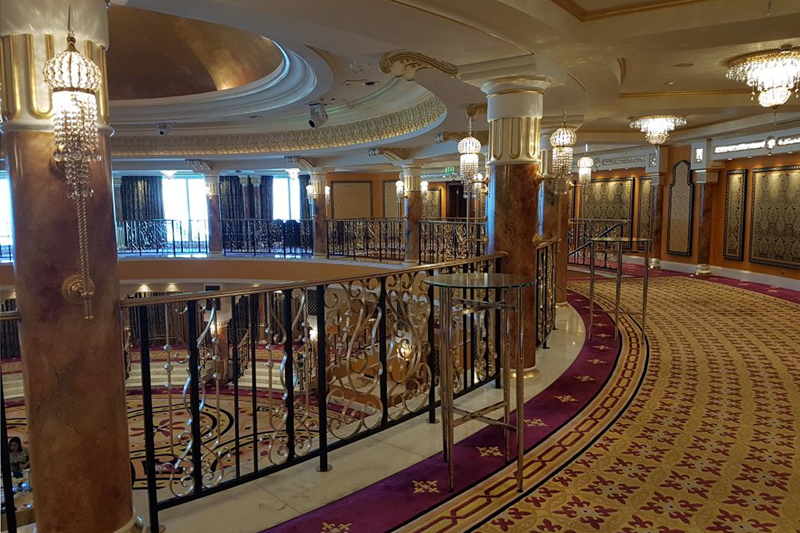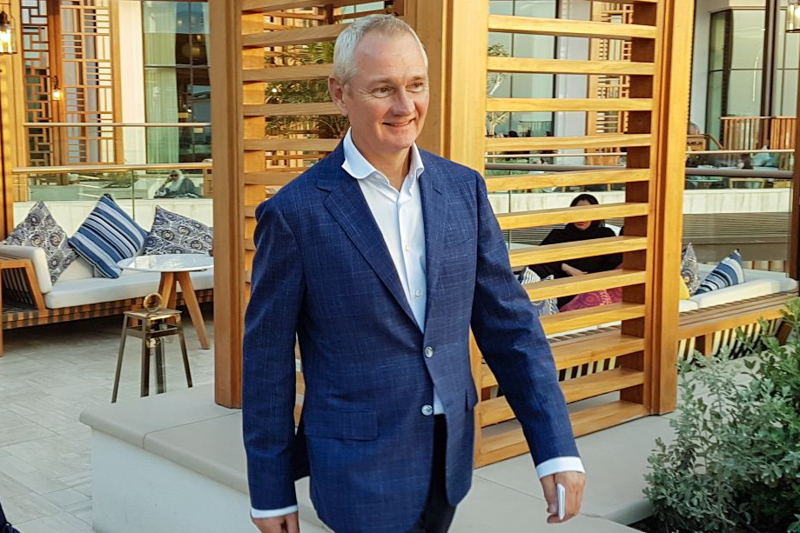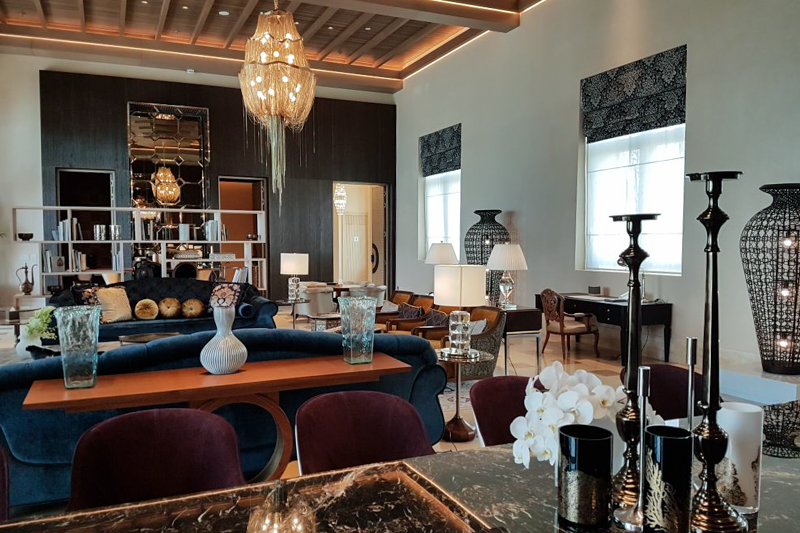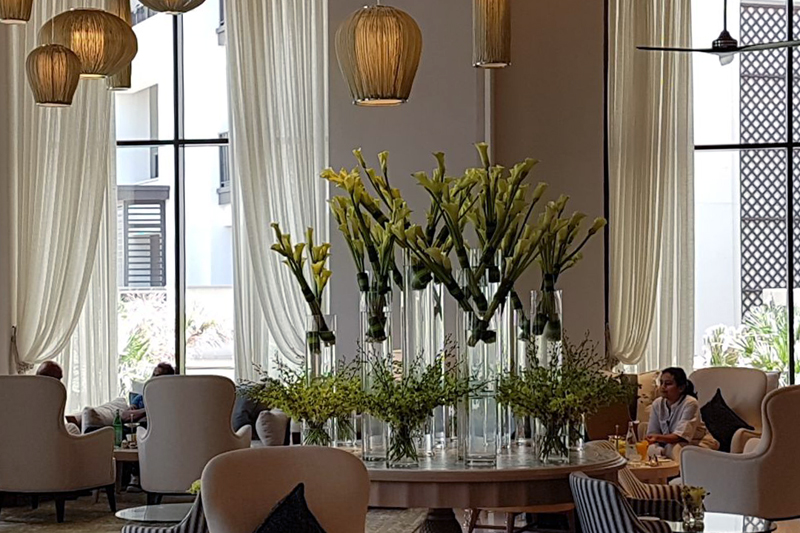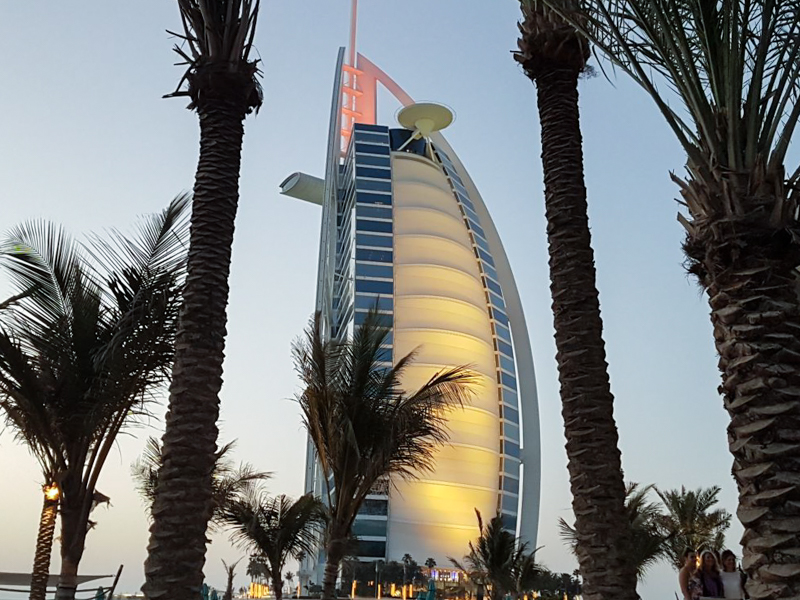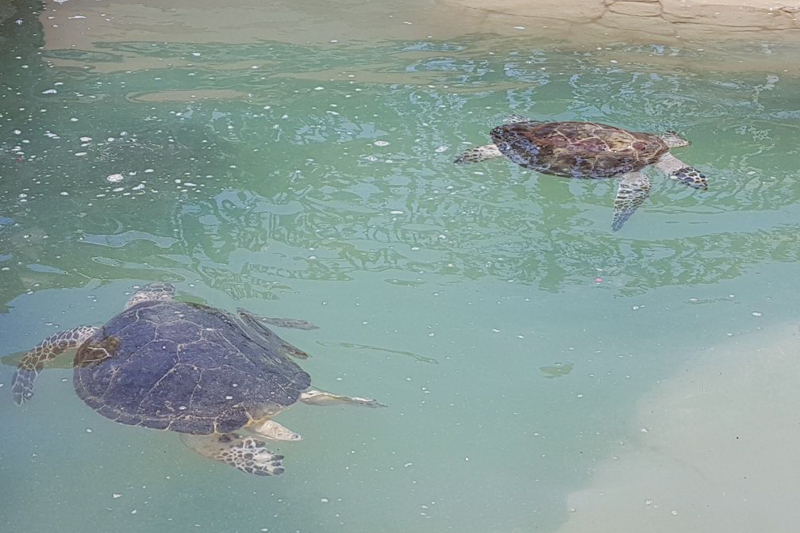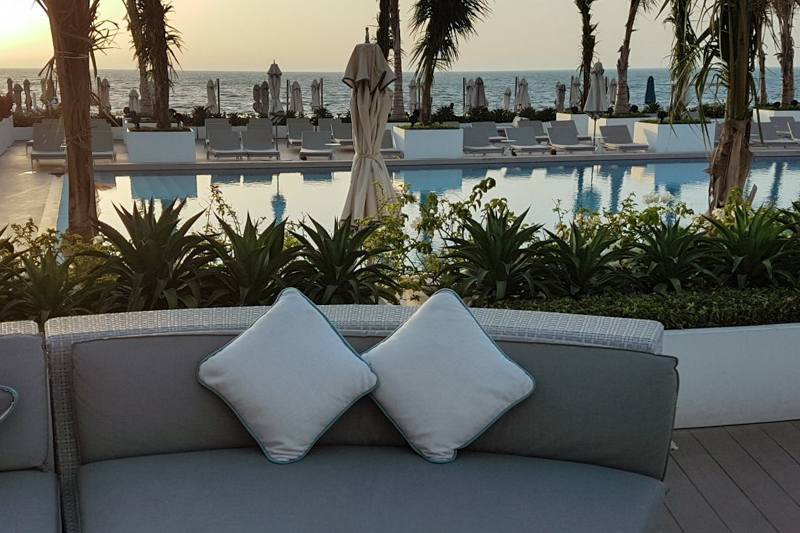 |
|
|
|
A Journey around Jumeirah. Dubai.jpg)
03.05.2017 — Analysis King Midas turned everything he touched, including food, to gold as an ancient Greek myth story goes. His frenzy for wealth led him to transform his own daughter into a golden statue. These days a wise and non-avaricious ruler is capable to generate "golden" projects. Not just for himself, but for the society too. Sheikh Mohammed bin Rashid Al Maktoum, the vice president and prime minister of the United Arab Emirates, is the best example of that. As they say in the late ’90s, when Burj Al Arab’s interior furnishing was under way, the Ruler of Dubai arrived at the hotel and looking at its white walls asked about the missing Arabic style. The designers team had to urgently fill in the hotel’s interior with luxury symbols.
The inner side of Burj Al Arab, also known as the "Sail" due to its distinct shape, is worth seeing inside, at least by visiting its Lobby. It is a most renowned Dubai’s symbol and, undoubtedly, an Icon in the hotel business. Try and recall on the spot some world-famous hotel. Most people would name Burj Al Arab. However one cannot be sure that even upon getting into Dubai, one will be able to overcome the last 100 meters separating the hotel from the shore line. The bridge to Burj Al Arab is guarded, and any attempts of looky-loo tourists to cross it are suppressed. You have to either be a guest of the "Sail", or have a table reserved at the hotel’s cafe or restaurant to enter it.
Could, under the circumstances, an invitation received by RusBusinessNews to visit Burj for interviewing General Manager Margaret Paul be turned down? The answer is definite no, all the more so as ten years ago I had visited the hotel and was wondering what changes had been introduced over that time lapse. Jumeirah Group luxury hotel chain is a part of Dubai Holding. Twenty years ago its "piloting" Jumeirah Beach Hotel, also known as the "Wave" due to the relevant design, opened its doors. A couple years later, there was the opening of Burj Al Arab which was immediately named as a seven-star hotel by some reporter, though there is no such a category. At the first glance, the "Sail" hasn’t changed over the decade. Same fountain at the entrance with water streamlets looking like little jumping fish. Now there are Chinese tourists in front of it huddling to make pictures. Staying at Burj is one of the first issues on their national touristic must-do rating checklist.
They do renovate the atrium and the rooms from time to time, but there seems to be no drastic innovations. The projector clocks still keep on counting the time for the hotel’s rich guests. Like 10 years ago, the price of a "simple" two-storeyed room starts from USD 2,000. The hotel’s infrastructure – this is where a revolution has taken place! The famous seafood restaurant Al Mahara is no longer a underwater cave with a huge aquarium. Due to an embrasure made in the wall, there’s now more light in it and it is cozier. Moreover, for the first time in its history, Michelin stars are shining upon it. Nathan Outlaw from Britain who became "The Oyster Shell"’ chef in the autumn of the last year has two of them.
How has the "Sail" been operating all these years without the Michelin-starred chef? Margaret Paul gives a shrug of her shoulders in reply to this question – "everything was premium class any way, we are just following the global trend. Visitors’ feedback analysis has led to the solution – it’s high time we added some stars at the kitchen". A still more challenging question is - how the hotel’s guests have been doing without a swimming pool of a relevant size for almost 17 years? They used to go to the beaches and pools of the neighbouring Jumeirah group hotels. Everything changed a year ago, in a golden-style manner, of course. The hotel was complemented with a unique sea platform. The area of 10 thousand square meters accommodates two large swimming pools, a bar, a restaurant, a sandy beach, and luxurious cabanas to get sheltered from the scorching sunshine. You won’t find such a Terrace anywhere else in the world. This uniqueness is what makes the philosophy of Jumeirah group.
Burj means Tower as translated from Arabic. It is maintained by 1,600 employees of 70 nationalities which reminds us of the Bible’s Tower of Babel the constructors of which were confounded by the God not to understand each other and not to complete their grand project. Dubai is a city of expatriates. Most of its current residents have come to earn their living from various countries of the world. It’s not just a multi-language venue, it’s a true melting pot. "Yes, it’s a real challenge to head such a team, but we are doing all right," consents Margaret Paul who was born in Scotland. Oh, that’s the kind of person Margaret is! An ocean of charisma coupled with a tough character. A life given to the career with Jumeirah. Talking to her, I can’t help thinking she is managing the Icon. What will be there in her career after Burj Al Arab? Margaret is smiling in reply: "I have no crystal ball to read my fortune. And I am not thinking about it at the moment."
If Burj Al Arab is the hotel with the most numerous stars in the world, it must be that Margaret Paul would agree to a hotel in the sky only where shuttles from Dubai would fly to. Meanwhile, she is busy with the growing flow of the tourists from China, Russia, and South Korea. The new UAE’s visa-free regime for Russians has instantly influenced the luxury hotels sector occupancy in a positive manner. Last-minute decisions about visa-free trips raise demand for vacant airplane seats and hotels rooms. Well-off travelers have an advantage here. Of course, it does happen that there are no even business class seats in airliners flying to Dubai. Burj also cannot meet all the requests for reservations sometimes. By the way, it is already now, three years in advance, that the "Sail" has opened reservations for the period of EXPO 2020 in Dubai.
Waiting for the shower of riches that will be brought by the biggest international exhibition over the five recent years, Dubai is growing by leaps and bounds. By the time of EXPO there is going to be 160 thousand hotel rooms more! On the eve of 2017, 430 rooms were opened for tourists at Jumeirah Al Naseem. This is a finishing touch hotel of the Madinat Jumeirah resort – there is no more space at the allocated two-kilometers long shore section. It has been built beside the beach where Burj’s guests used to lie in the sun. According to Richard Alexander, the General Manager of the hotel, they do still visit it. Some guests like the pools of the Terrace, some prefer the natural waters of the Gulf.
"Let’s proceed to the bar’s alcove from the lobby and enjoy the evening breeze," suggests Richard on my coming to interview him. Al Naseem is Arabic for 'sea breeze'. The hotel’s concept is to let the guests enjoy it to the fullest. The debutant is different from the rest of the Madinat’s "family": if the resort is mostly an oriental fairy tale, this one, according to the architect’s intention, is an embodiment of the modern Dubai. In my opinion, this is a palazzo in Venice constructed by the Arabic merchants, open to the light and air. For the first time in Jumeirah, the architects have applied a free layout of the rooms due to the sliding doors and adjoining rooms.
The garden scenery is especially worth talking about. "What is the custom in Dubai? Everything is strictly measured, palms are located in straight lines like soldiers. We have put that aside, we rely more on natural and spontaneous look," Richard explains glancing around the inner perimeter of the hotel. This is where one starts realizing what Jumeirah’s motto which says 'Stay Different' is about. They are so different, the "Sail" and the "Sea Breeze". Burj Al Arab is soaring in the beams of the setting Sun. Richard Alexander started working there in August 2001. However he had to turn down the beneficial contract soon for family reasons.
Maybe sometimes it’s easier to start from scratch. Everyone’s efforts are more notable at the start. Richard, who’s coming from Britain, has an experience of successful hotel start-ups. When Al Naseem was opened in December 2016, the occupancy rate reached 89%! In April, it is 74% full. Russian kids dressed up for the dinner are scampering around the evening lawns. Some of them being followed by their Filipino nannies. There is a site especially appealing to kids – a pool with sea turtles. Sometimes Dubai’s residents bring to Al Naseem harmed animals. They have mostly been left with no feet or a damaged shell after encountering scooters or yachts. At the turtle resort, they are treated and adapted to a handicapped life in natural environment.
Grown-ups have entertainments of their own. Over the last month, 3,400 shishas have been consumed at the Arabic tobacco parlor of the hotel, i.e., over 100 per day. It is an enviable result for any café or a restaurant in Dubai. What is the key success factor for Al Naseem with major competitors first of all being Madinat Jumeirah’s famous Al Qasr and Mina A’Salam? Maybe it’s the attention to every little detail. Richard tells me how hard it was to pick a name for hotel’s seafood restaurant. Like going over tasbeeh, finger counting, he is listing the titles that had to be turned down due to the issues arising in the course of translations into various languages. Finally, it was Rockfish (Sebastes) that was chosen. There is nothing unique about it (there is a whole "floc" of restaurants with the same title), but nobody would cringe at it at least. The Dubai-based Rockfish will be recalled by the trolley with a variety of gins – maybe that is the reason of the fact that the most numerous visitors to the hotel are from Great Britain so far.
"The hotel business is never asleep. You start with new furniture and form the hotel team. As soon as you reach success in it, it’s time to renovate the furniture," Richard replies to my question on why Al Nassem is like a marathon distance for him. Jumeirah chain’s corporate color is golden. But as the proverb goes "All is not gold that glitters". Burj Al Arab’s and Al Naseem’s brilliant service is guaranteed by the management. Day-to-day Margaret Paul and Richard Alexander are contributing to the modern Arabic legend in the form of their feelings and thoughts, experience and innovative approach. It is difficult to describe it – one should experience it on their own by coming to Dubai, Jumeirah. Vadim DYNIN |
| Regions | Project participants | Investment projects | Consulates and Trade Offices | News and Analysis | About the Project |
|
© RusBusinessNews, 2009. All rights reserved. Establishing a hyperlink to RIA RusBusinessNews is required for using any of the material published on this website. News and analytical reviews are translated into foreign languages by the TRANSLIT Translation Agency |
«Sum of technologies»® Web design Site promotion |
